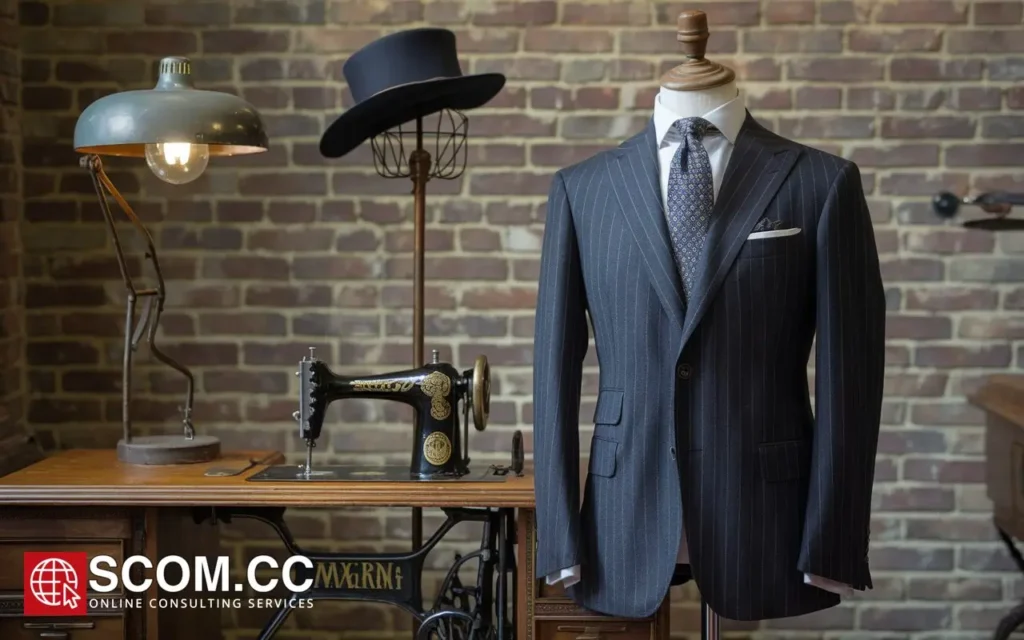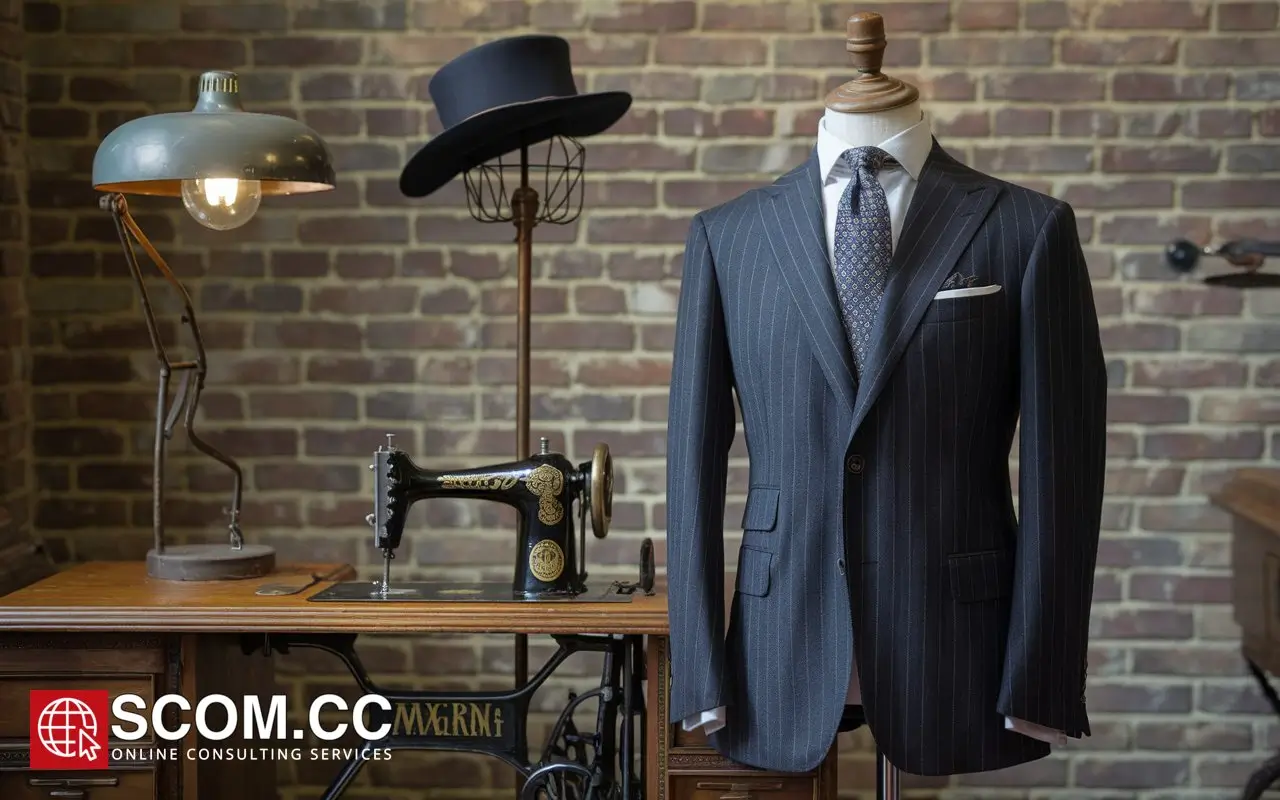How Did Tailoring Evolve from the 18th Century to Today?

- History of Tailoring: How Did Tailoring Evolve from the 18th Century to Today?
- Introduction to the Evolution of Tailoring
- Tailoring in the 18th Century: Foundations of Modern Craftsmanship
- 19th Century Tailoring: Industrialization and Innovation
- Early 20th Century: Tailoring in a Changing World
- Late 20th Century to Present: The Modern Tailoring Landscape
- Summary Table
-
FAQ
- 1. What were the main tailoring techniques in the 18th century?
- 2. How did the Industrial Revolution impact tailoring in the 19th century?
- 3. What influence did World War I and World War II have on tailoring?
- 4. How did the early 20th century change the fashion industry?
- 5. What technological advancements have shaped contemporary tailoring?
- 6. How has globalization affected modern tailoring practices?
- 7. What role do celebrities play in current tailoring trends?
- Conclusion: The Future of Tailoring
History of Tailoring: How Did Tailoring Evolve from the 18th Century to Today?
Introduction to the Evolution of Tailoring
Tailoring has undergone a remarkable transformation since the 18th century, evolving from a rudimentary craft to a sophisticated art form. The journey of tailoring reflects broader socio-economic changes and advancements in textile technology, embodying shifts in fashion, culture, and society. This comprehensive exploration will delve into the intricate history of tailoring, tracing its development from the 18th century to contemporary times.
Tailoring in the 18th Century: Foundations of Modern Craftsmanship
Early Developments and Techniques
In the 18th century, tailoring was predominantly characterized by its handcraftsmanship. Tailors operated as individual artisans, often working from their homes or small shops. This period saw the use of sewing machines and thread, marking a significant leap from hand-sewn garments. Tailoring techniques were deeply rooted in European fashion, with English and French styles setting the standard.
Patterns and Measurements: Tailors relied heavily on manual measurements and bespoke patterns, which were crafted to fit individual clients precisely. This era also saw the introduction of the fitted waistcoat and frock coat, which became iconic elements of male fashion.
Materials and Influences
The 18th century was marked by the use of luxurious fabrics such as silk, velvet, and wool. Tailors began to experiment with embellishments and trimmings, reflecting the opulent tastes of the aristocracy. French fashion, particularly the Louis XVI style, greatly influenced tailoring practices across Europe.
19th Century Tailoring: Industrialization and Innovation
The Impact of the Industrial Revolution
The 19th century witnessed the Industrial Revolution, which had a profound impact on tailoring. The introduction of the sewing machine by Elias Howe and Isaac Singer revolutionized garment production. This innovation allowed for faster and more precise stitching, transforming the tailoring industry.
Ready-to-Wear Fashion: The Industrial Revolution also gave rise to the ready-to-wear garment sector. Tailors began to produce standardized sizes and patterns, making tailored clothing more accessible to the general public.
Technological Advancements
With technological advancements came improved textile manufacturing techniques. The invention of the jacquard loom allowed for intricate patterns and designs in fabrics. This period also saw the development of synthetic dyes, which expanded the color palette available to tailors.
Early 20th Century: Tailoring in a Changing World
The Influence of War and Economic Shifts
The early 20th century was marked by significant global events, including World War I and World War II, which influenced tailoring practices. The wartime economy led to the use of military-inspired styles and practical designs. Tailors adapted by incorporating features such as epaulettes and patch pockets into civilian clothing.
Fashion Icons and Trends: This era also saw the rise of fashion icons like Coco Chanel and Christian Dior, who influenced tailoring trends with their innovative designs. The flapper dresses of the 1920s and the New Look of the 1940s and 1950s exemplified the shift towards more feminine and structured silhouettes.
Post-War Developments
Post-war prosperity led to the emergence of luxury tailoring houses and high fashion. Tailors began to focus on custom-made garments, emphasizing quality craftsmanship and personalized fit. This period also saw the rise of American sportswear and the incorporation of casual elements into tailored clothing.
Late 20th Century to Present: The Modern Tailoring Landscape
The Rise of Globalization and Fast Fashion
The late 20th century and early 21st century have been characterized by globalization and the rise of fast fashion. Tailoring has adapted to these changes by incorporating international influences and embracing modern trends.
Technology and Innovation: The advent of digital tailoring technologies has allowed for precision in garment fitting and design. 3D body scanning and virtual fitting rooms have become integral tools in the tailoring process. Moreover, sustainable fashion has gained prominence, prompting tailors to consider eco-friendly materials and practices.
Contemporary Tailoring Trends
Today's tailoring landscape is marked by a blend of traditional techniques and modern innovations. Bespoke tailoring continues to thrive, offering clients personalized and high-quality garments. The resurgence of vintage styles and retro influences reflects a growing appreciation for historical tailoring practices.
Celebrity Influence: Celebrities and fashion influencers play a significant role in shaping contemporary tailoring trends. High-profile events and red carpet appearances often showcase bespoke and couture designs, setting new standards for fashion and tailoring.
Summary Table
| Period | Key Developments | Influences and Trends | Technological Advancements |
|---|---|---|---|
| 18th Century | Handcrafted tailoring, bespoke patterns, fitted waistcoat, frock coat | European fashion, French and English styles | Manual measurements, hand-sewing techniques |
| 19th Century | Industrial Revolution impact, rise of ready-to-wear garments | Standardized sizes, military-inspired designs | Sewing machine, jacquard loom, synthetic dyes |
| Early 20th Century | Influence of WWI and WWII, rise of fashion icons | Military styles, flapper dresses, New Look | Increased focus on custom-made garments |
| Late 20th Century to Present | Globalization, fast fashion, digital tailoring technologies | International influences, vintage styles, sustainable fashion | 3D body scanning, virtual fitting rooms, eco-friendly materials |
FAQ
1. What were the main tailoring techniques in the 18th century?
In the 18th century, tailoring techniques were characterized by handcraftsmanship and bespoke patterns. Tailors relied on manual measurements and hand-sewing techniques to create garments tailored to individual clients. Key elements included the fitted waistcoat and frock coat.
2. How did the Industrial Revolution impact tailoring in the 19th century?
The Industrial Revolution brought significant changes to tailoring, including the introduction of the sewing machine, which allowed for faster and more precise garment production. This period also saw the rise of ready-to-wear garments and standardized sizes, making tailored clothing more accessible.
3. What influence did World War I and World War II have on tailoring?
World Wars I and II influenced tailoring by introducing military-inspired designs into civilian clothing. Features such as epaulettes and patch pockets became common. The wartime economy also led to more practical and functional clothing styles.
4. How did the early 20th century change the fashion industry?
The early 20th century saw the rise of influential fashion icons like Coco Chanel and Christian Dior, who introduced new styles such as flapper dresses and the New Look. These trends emphasized feminine and structured silhouettes, shaping modern fashion.
5. What technological advancements have shaped contemporary tailoring?
Contemporary tailoring has been shaped by advancements such as digital tailoring technologies, including 3D body scanning and virtual fitting rooms. These innovations allow for more precise garment fitting and design. The focus on sustainable fashion has also become prominent.
6. How has globalization affected modern tailoring practices?
Globalization has introduced international influences into tailoring, leading to a blend of traditional and modern styles. The rise of fast fashion has also influenced tailoring practices, with an increased emphasis on trends and accessibility.
7. What role do celebrities play in current tailoring trends?
Celebrities and fashion influencers significantly impact current tailoring trends by showcasing bespoke and couture designs at high-profile events. Their choices often set new standards for fashion and tailoring, influencing public preferences and trends.
Conclusion: The Future of Tailoring
The evolution of tailoring from the 18th century to today illustrates a rich history of craftsmanship, innovation, and cultural change. As the industry continues to evolve, it is likely to see further advancements in technology, sustainability, and fashion trends. The timeless art of tailoring remains a testament to the skill and creativity of artisans across centuries.

To explore more about tailoring, visit our Blog of Tailoring. If you have any questions or need assistance, go to our contact page. Additionally, you can find more information about tailoring and consulting at this tailoring and consulting portal.

Leave a Reply